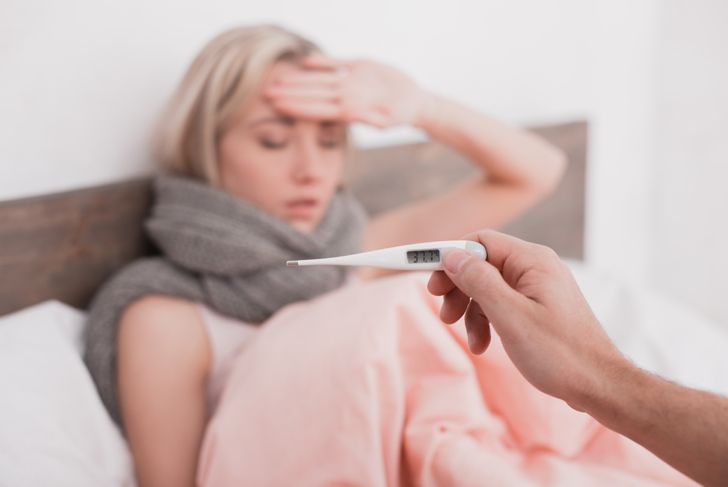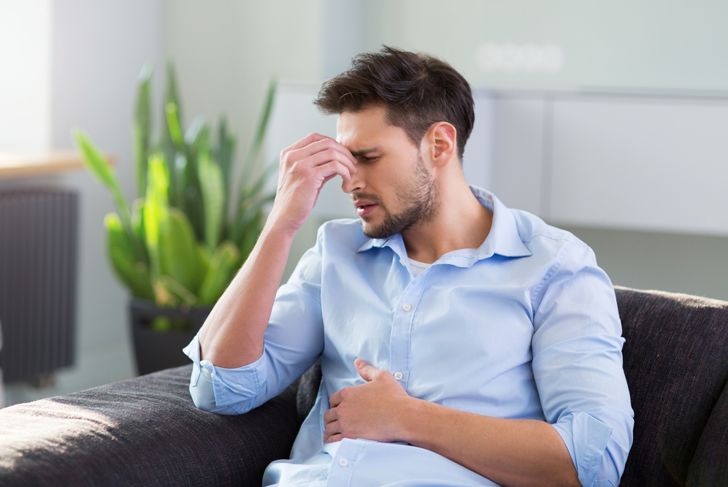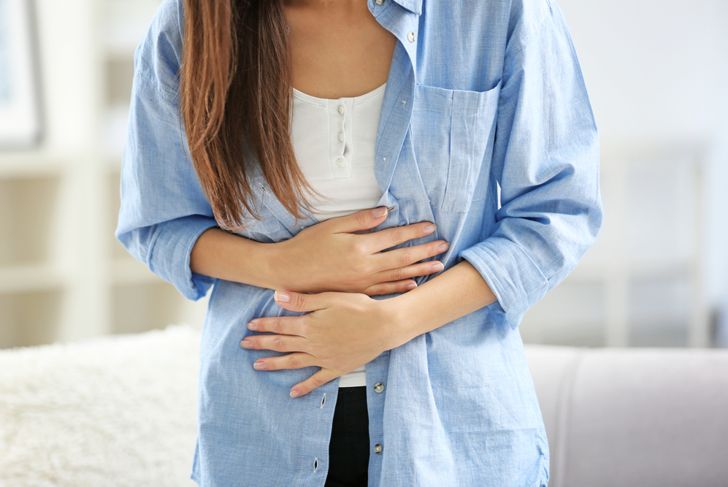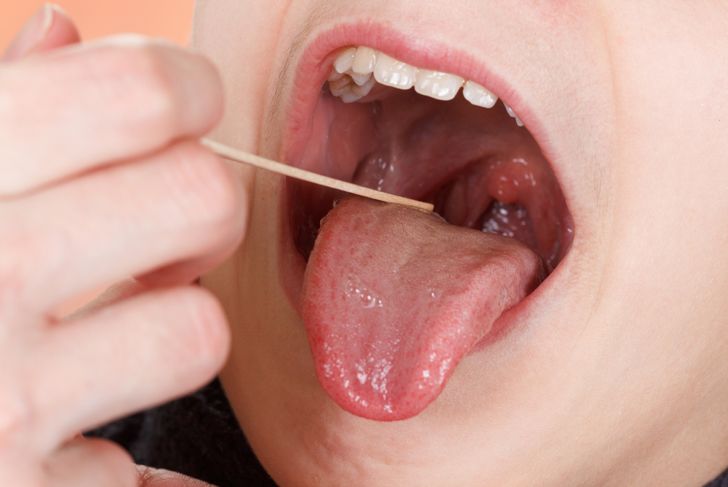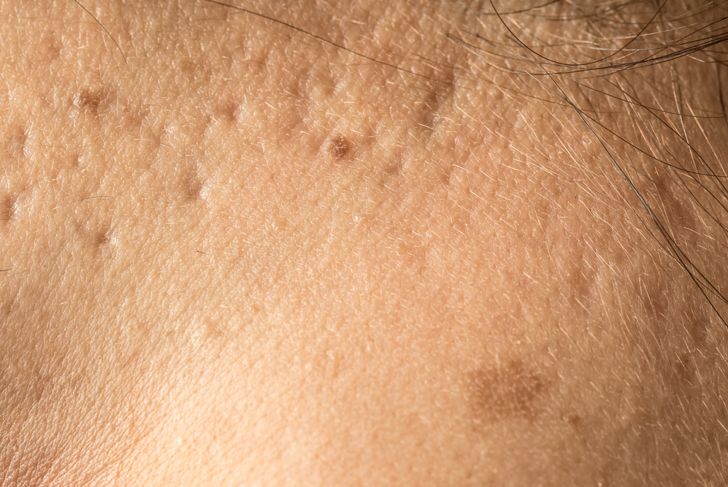Although smallpox was declared eradicated in 1980, and no naturally occurring cases of the disease have occurred since then, it is still a frightening disease. The Centers for Disease Control and Prevention, along with other research organization, still study smallpox and its various treatment and prevention techniques in the event that it might be used in a bioterrorism attack. Smallpox is extremely contagious with a high fatality rate, and it typically occurs in localized outbreaks. Luckily, vaccines have helped to eliminate this disease from everyday life completely, but it is still important to know the symptoms in the event of a resurgence.
Flat, Red Spots
One of the first visible signs of smallpox is a skin rash. This rash appears as flat, red spots, and it typically begins on the face. Next, the spots will appear on arms, legs, hands, and feet. Within 1-2 days, they will also appear on the torso. During this time, the smallpox is extremely contagious and can be contracted in a variety of ways, primarily by direct contact. This spots can sometimes be confused with chicken pox, but chickenpox is typically itchy and more raised initially. If you notice flat, red spots appearing on your face and extremities, you should seek immediate medical care.
Fever
One of the first signs of smallpox is a high fever. Typically, this will occur about two weeks after you contract smallpox. Prior to developing a fever, you are not contagious and will not feel ill. Once the virus has completed its initial incubation period, you will experience flu-like symptoms including a fever. Although it might not seem alarming at first, anyone who experiences a fever and then develops a rash should immediately contact their physician. In most cases, the fever will decline as the rash begins to form, then peak after the rash turns into blisters.
Pain and Discomfort
Aches and pains are a very common symptom of smallpox. This is another flu-like symptom that occurs during the initial onset of smallpox, and many people ignore it at first. Because aches and pains are not an unusual occurrence, even in healthy patients, you may try to treat these with over-the-counter pain relievers like naproxen or ibuprofen. However, if they occur at the same time as a fever, it is usually a sign that something more serious is the culprit. Monitor your symptoms carefully, and if they worsen or a rash appears, seek treatment for them right away.
Blisters
Within four days of developing flat, red spots all over the body, these spots will begin to transform into blisters. These blisters are typically pus-filled, with a thick, clear fluid filling the centers. They may also have a small indentation in the center. In many patients, these sores will eventually scar over and leave a pock-marked appearance. These sores are likely to be tender and painful until they heal, and should be treated be a physician due to the seriousness of smallpox. The blisters will remain for more than a week, before beginning to scab over and heal.
Fatigue
Fatigue is one of the most common symptoms of smallpox. Patients who contract smallpox may feel fine for the first two weeks, but once they begin to develop a fever and other flu-like symptoms, they may sleep for long periods of time or experience general weakness. Usually, when you feel fatigued, it is your body’s way of letting you know that it needs time to heal and recover from whatever is affecting you. This is especially beneficial with smallpox since the fatigue will typically prevent you from going out and spreading the infection to others.
Headache
Another common early sign of smallpox is a headache that won’t go away. This typically occurs about two weeks after initial infection and is accompanied by body aches and back pain. Because the earliest symptoms of smallpox are similar to the symptoms of other colds and viruses, patients may not realize they are infected right away. However, these signs are typically only present for a few days before the onset of the rash. If your headache is accompanied by a rash, you should take immediate precautions to avoid going out in public, and you should seek medical care.
Nausea and Vomiting
Patients who have smallpox may feel sick to their stomach and experience nausea and vomiting throughout the course of the infection. Although this is most common in the initial stages, nausea and vomiting may occur even after the rash has turned into blisters. Although the exact reasons for this are unknown, it is important to make yourself as comfortable as possible. Your physician may be able to provide medication that will settle your stomach and allow you to eat food. If you are self-treating your nausea and vomiting, eat simple foods like broth, crackers or dry toast to keep yourself nourished throughout your illness.
Red Spots in Mouth
Although smallpox is most visible on the face and extremities, reds spots in the mouth are also a telltale sign of the infection. These spots will appears as flat, red bumps that may eventually turn into blisters. The blisters may drain until the throat, causing nausea. If you notice that mouth sores accompany your flu-like symptoms, you should contact a physician to determine whether the infection is smallpox. Although these spots are usually not itchy, they may be painful during the blister stage. Typically, they will appear on the tongue and the roof of the mouth, as well as the tonsils and throat.
Inability to Work
People who have smallpox are not capable of going about their daily routine. Because this is a very contagious disease, smallpox patients are better off staying away from the public anyway. However, even if they wanted to, most people suffering from smallpox would not feel up to leaving the house. Typically, patients are bedridden due to extreme fatigue and pain. Nausea and vomiting may also make it difficult to leave the house. If you have smallpox, you should expect that you will not be able to work, go to school, or leave your home for any reason due to the symptoms.
Scabs and Scarring
After the smallpox rash turns to blisters, the blisters will begin to scab over as they heal. These scabs will typically be indented, leaving permanent scars behind. Your physician may be able to recommend treatment to reduce scarring, but the scab stage may be very visually upsetting. More importantly, you should be aware that the smallpox infection is still contagious during the scab stage until the last scab falls off. Patients are likely to be under strictly supervised medical care at this stage, but if you are not, you should not have any contact with the public until all of your scabs have healed.

 Home
Home Health
Health Diet & Nutrition
Diet & Nutrition Living Well
Living Well More
More
